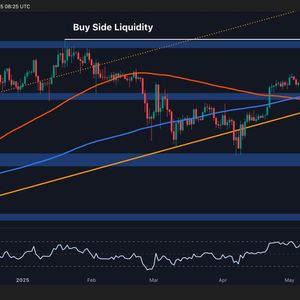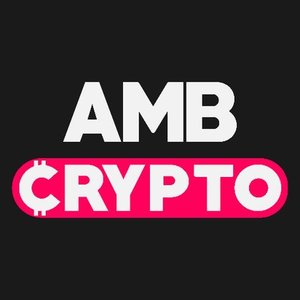Arbitrum DAO is on a path that could see it deliver its most profitable month to date, with a projected Gross Profit Margin of 98% for May. This is a rather stunning milestone that highlights something we suspected all along: Arbitrum’s economic strength is growing, along with its operational efficiency. Arbitrum DAO is on pace for its highest-ever Monthly Gross Profit Margin, hitting 98% in May. For context: Gross Profit Margin = Blockspace Revenue (Tx Fees, Timeboost, Orbit License) – Associated Costs (Developer Guild, DA) With Pectra reducing the cost of Blobs and Timeboost… pic.twitter.com/IW543oYiyb — Tom Wan (@tomwanhh) May 28, 2025 Profits have jumped because revenue streams are shooting up and costs are pretty stable. Arbitrum makes money from transaction fees, Timeboost auctions, and Orbit licensing fees. At the same time, costs tied to the Developer Guild and DAO operations have stayed within reasonable limits, allowing the DAO to act more like a business with decent margins that is also spending enough to ensure that it will grow. The DAO now seems to be walking a tightrope very efficiently. Pectra and Timeboost: Driving Efficiency and Revenue This movement toward leaner operations is being driven by two major forces. One is Pectra, an upgrade of Ethereum that is coming soon and expected to lower the price of data blobs. Data blobs are core to Arbitrum, which requires Ethereum for data availability. The Avatar DAO has operational expenses that are tightly tied to the cost of those blobs. So better Ethereum translates to a lower cost of Arbitrum. Timeboost is the other significant new feature introduced. It is a bidding mechanism, whereby users and protocols can pay for priority access to blockspace. Arbitrum has become the first Rollup to offer this as a feature, and it has quickly evolved into a significant revenue-generating machine for the protocol. Pectra and Timeboost, together, signal a far-reaching pivot in the Arbitrum ecosystem. The DAO is not just adding new revenue streams; it is doing so in a way that doesn’t throw new bolts of complexity into the system or add overhead, which means a healthier financial model. Weekly Protocol Revenue Shows Clear Market Leaders In the previous week, protocols based on Arbitrum brought in a total of $1.18 million. That represents a 12 percent increase from the week before. This revenue performance definitely puts the decentralized layer-2 platform, which sits atop Ethereum, in the spotlight as far as demand and usage go. The largest revenue generator was GMX, a decentralized exchange focusing on perpetual trades, which generated $500,000. GMX remains a powerhouse on Arbitrum, where it provides high-leverage trades with low slippage. The strong revenues it produces almost certainly confirm its place at the top of the list of applications on the Arbitrum network. Gains Network finished in the second position, providing $140,000 of weekly revenue. It is an increasingly popular platform where synthetic assets are the main attractions. User scores on Smoothness, Mainstream appeal, and Friendship suggest it is a very user-friendly and appealing platform to use. Ostium Labs had revenue of $90,000, giving it the third-highest total among the top earners. Of note: Ostium is a newer protocol that’s gaining momentum and emerging as a serious competitor. Penpie and Uniswap tied for the fifth spot, each earning $74,000. Uniswap’s presence, as a major DeFi protocol, underscores the network’s appeal to not just native Arbitrum applications but also well-established projects from other ecosystems. Last week, @arbitrum protocols generated $1.18M in revenue (+12% WoW). One exchange, half a million in revenue. GMX is dominating the leaderboard. @GMX_IO : $500k @GainsNetwork_io : $140k @OstiumLabs : $90k @Penpiexyz_io : $74k @Uniswap : $74k pic.twitter.com/s1GEq6ZYj4 — Entropy Advisors (@EntropyAdvisors) May 28, 2025 A Leaner, Profitable DAO with a Strong Outlook The numbers tell a clear story: Arbitrum DAO is attaining a level of profitability and operational odds-and-ends that sets it apart. Its ability to grow revenue through tools like Timeboost and Orbit licensing, while keeping operational expenses under control, spotlights the clear power of decentralized coordination, when properly aligned with economic incentives. In the future, Arbitrum is set to keep up this momentum. With reductions in user costs from Ethereum upgrades and a continually expanding ecosystem, the DAO has now laid down the groundwork for long-term, sustainable financial health. If current trends continue, May could prove to be a real turning point—not just for Arbitrum, but also for the more general conversation around sustainable, profitable DAO governance. The Layer 2 landscape is competitive, but Arbitrum is not merely expanding within it; it is demonstrating that decentralization and efficiency can coexist and even, in this case, potentially set a new standard for what successful blockchain ecosystems might look like. Disclosure: This is not trading or investment advice. Always do your research before buying any cryptocurrency or investing in any services. Follow us on Twitter @nulltxnews to stay updated with the latest Crypto, NFT, AI, Cybersecurity, Distributed Computing, and Metaverse news !


















